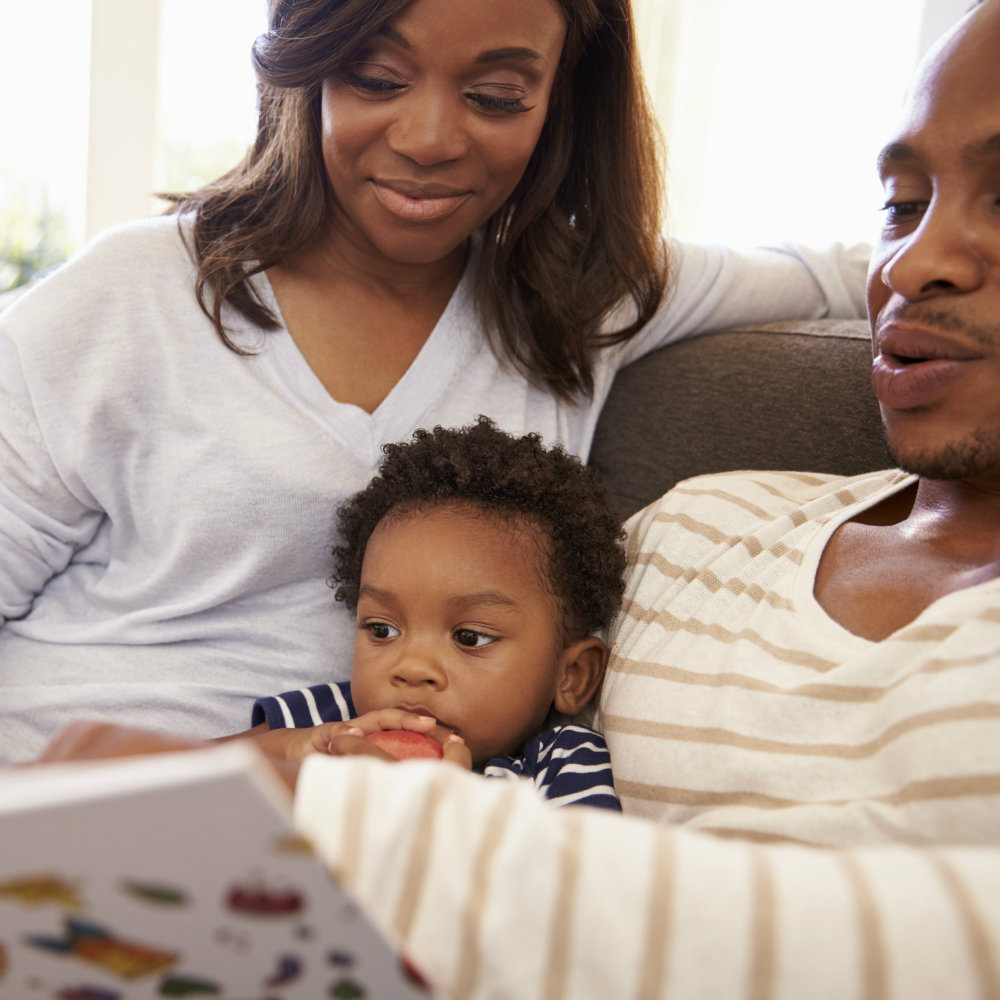
A UF psychology professor explains which features make a book a good choice for shared reading with babies based on her direct experience with infants in a laboratory setting.
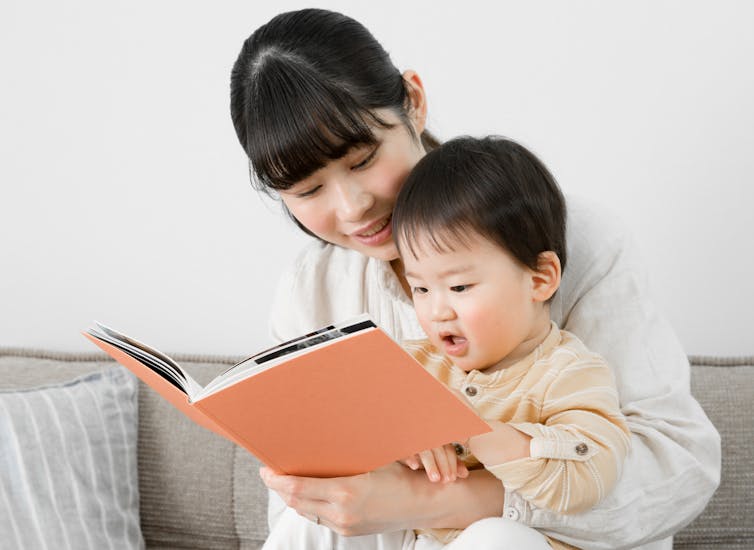
Lisa S. Scott, University of Florida
Parents often receive books at pediatric checkups via programs like Reach Out and Read and hear from a variety of health professionals and educators that reading to their kids is critical for supporting development.
The pro-reading message is getting through to parents, who recognize that it’s an important habit. A summary report by Child Trends, for instance, suggests 55 percent of three- to five-year-old children were read to every day in 2007. According to the U.S. Department of Education, 83 percent of three- to five-year-old children were read to three or more times per week by a family member in 2012.
What this ever-present advice to read with infants doesn’t necessarily make clear, though, is that what’s on the pages may be just as important as the book-reading experience itself. Are all books created equal when it comes to early shared-book reading? Does it matter what you pick to read? And are the best books for babies different than the best books for toddlers?
In order to guide parents on how to create a high-quality book-reading experience for their infants, my psychology research lab has conducted a series of baby learning studies. One of our goals is to better understand the extent to which shared book reading is important for brain and behavioral development.

Researchers see clear benefits of shared book reading for child development. Shared book reading with young children is good for language and cognitive development, increasing vocabulary and pre-reading skills and honing conceptual development.
Shared book reading also likely enhances the quality of the parent-infant relationship by encouraging reciprocal interactions – the back-and-forth dance between parents and infants. Certainly not least of all, it gives infants and parents a consistent daily time to cuddle.
Recent research has found that both the quality and quantity of shared book reading in infancy predicted later childhood vocabulary, reading skills and name writing ability. In other words, the more books parents read, and the more time they’d spent reading, the greater the developmental benefits in their 4-year-old children.
This important finding is one of the first to measure the benefit of shared book reading starting early in infancy. But there’s still more to figure out about whether some books might naturally lead to higher-quality interactions and increased learning.
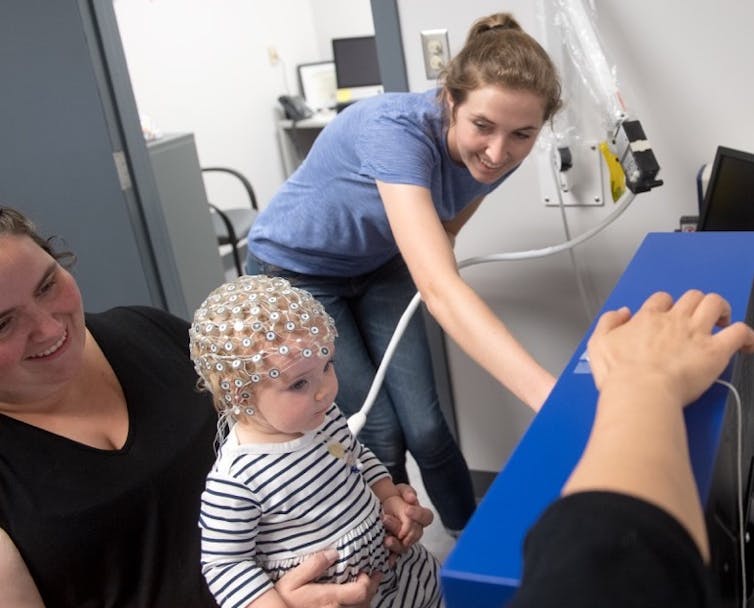
In our investigations, my colleagues and I followed infants across the second six months of life. We’ve found that when parents showed babies books with faces or objects that were individually named, they learn more, generalize what they learn to new situations and show more specialized brain responses. This is in contrast to books with no labels or books with the same generic label under each image in the book. Early learning in infancy was also associated with benefits four years later in childhood.
Our most recent addition to this series of studies was funded by the National Science Foundation and just published in the journal Child Development. Here’s what we did.
First, we brought six-month-old infants into our lab, where we could see how much attention they paid to story characters they’d never seen before. We used electroencephalography (EEG) to measure their brain responses. Infants wear a cap-like net of 128 sensors that let us record the electricity naturally emitted from the scalp as the brain works. We measured these neural responses while infants looked at and paid attention to pictures on a computer screen. These brain measurements can tell us about what infants know and whether they can tell the difference between the characters we show them.
We also tracked the infants’ gaze using eye-tracking technology to see what parts of the characters they focused on and how long they paid attention.
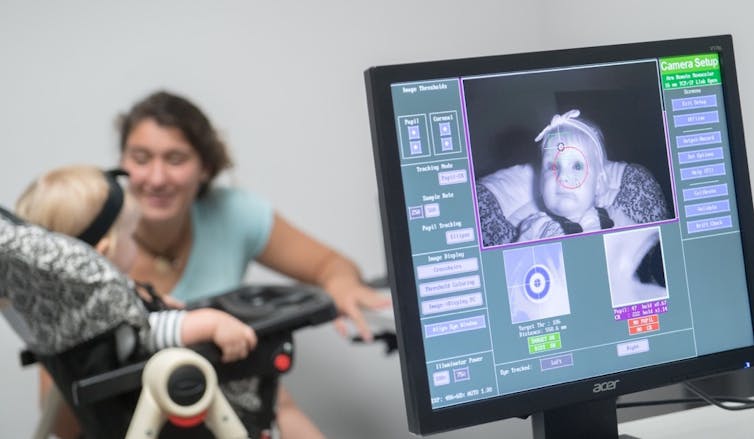
The data we collected at this first visit to our lab served as a baseline. We wanted to compare their initial measurements with future measurements we’d take, after we sent them home with storybooks featuring these same characters.

We divided up our volunteers into three groups. One group of parents read their infants storybooks that contained six individually named characters that they’d never seen before. Another group were given the same storybooks but instead of individually naming the characters, a generic and made-up label was used to refer to all the characters (such as “Hitchel”). Finally, we had a third comparison group of infants whose parents didn’t read them anything special for the study.
After three months passed, the families returned to our lab so we could again measure the infants’ attention to our storybook characters. It turned out that only those who received books with individually labeled characters showed enhanced attention compared to their earlier visit. And the brain activity of babies who learned individual labels also showed that they could distinguish between different individual characters. We didn’t see these effects for infants in the comparison group or for infants who received books with generic labels.
These findings suggest that very young infants are able to use labels to learn about the world around them and that shared book reading is an effective tool for supporting development in the first year of life.
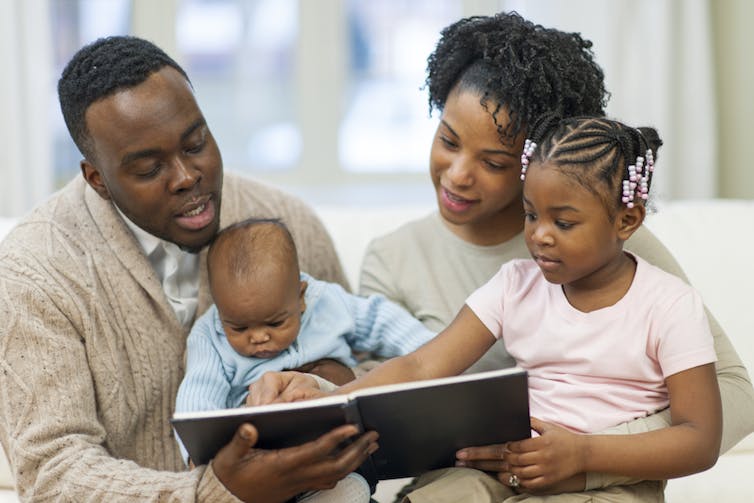
So what do our results from the lab mean for parents who want to maximize the benefits of storytime?
Not all books are created equal. The books that parents should read to six- and nine-month-olds will likely be different than those they read to two-year-olds, which will likely be different than those appropriate for four-year-olds who are getting ready to read on their own. In other words, to reap the benefits of shared book reading during infancy, we need to be reading our little ones the right books at the right time.
For infants, finding books that name different characters may lead to higher-quality shared book reading experiences and result in the learning and brain development benefits we find in our studies. All infants are unique, so parents should try to find books that interest their baby.
My own daughter loved the “Pat the Bunny” books, as well as stories about animals, like “Dear Zoo.” If names weren’t in the book, we simply made them up.
![]() It’s possible that books that include named characters simply increase the amount of parent talking. We know that talking to babies is important for their development. So parents of infants: Add shared book reading to your daily routines and name the characters in the books you read. Talk to your babies early and often to guide them through their amazing new world – and let storytime help.
It’s possible that books that include named characters simply increase the amount of parent talking. We know that talking to babies is important for their development. So parents of infants: Add shared book reading to your daily routines and name the characters in the books you read. Talk to your babies early and often to guide them through their amazing new world – and let storytime help.
Lisa S. Scott, Associate Professor in Psychology, University of Florida
This article was originally published on The Conversation. Read the original article.